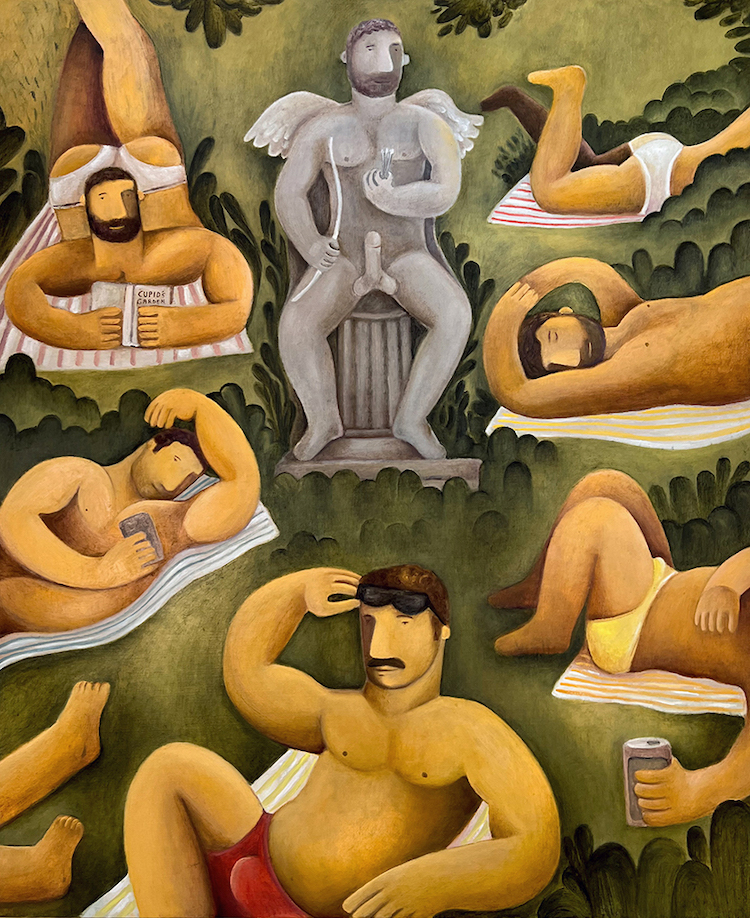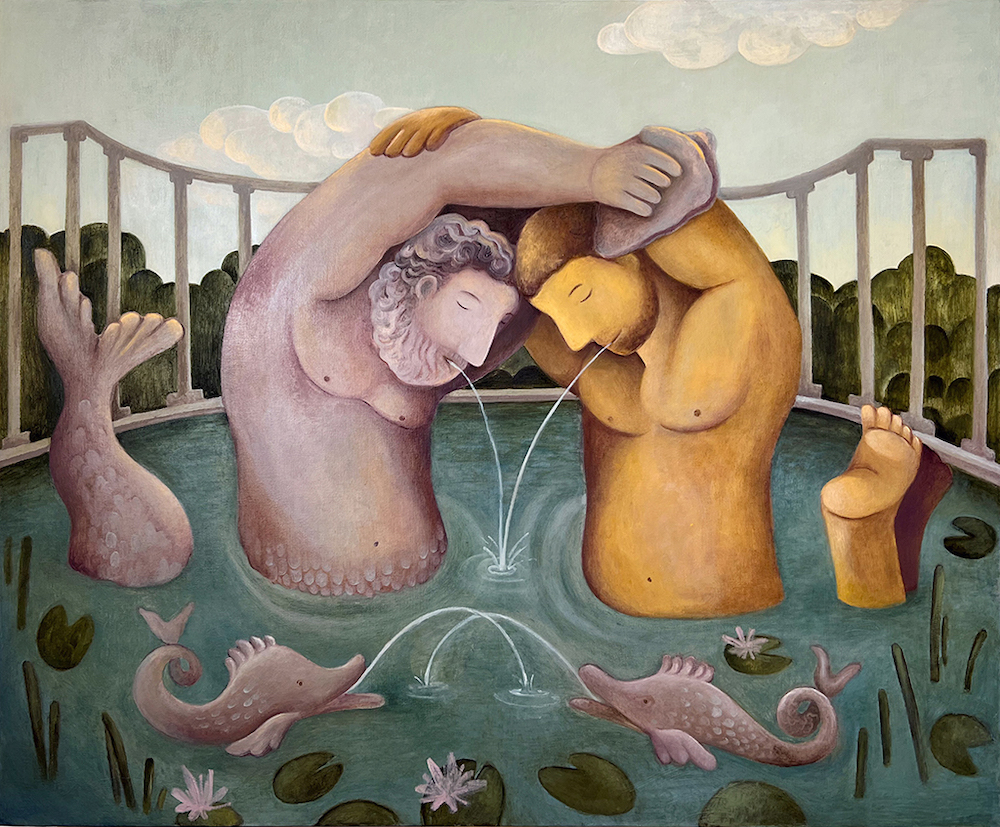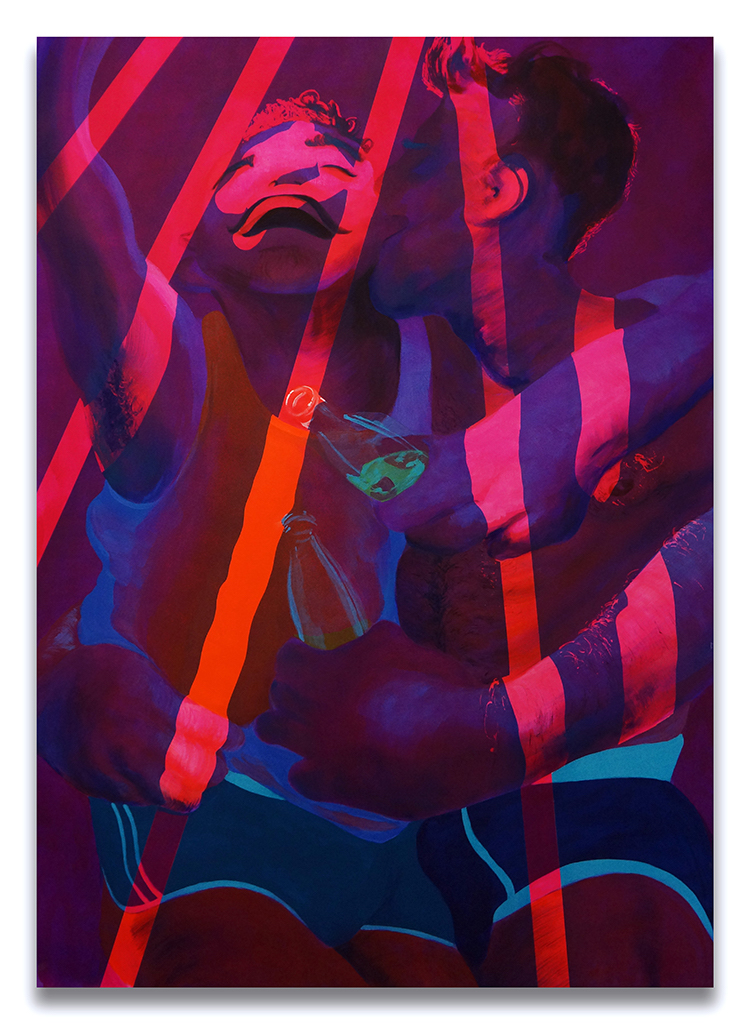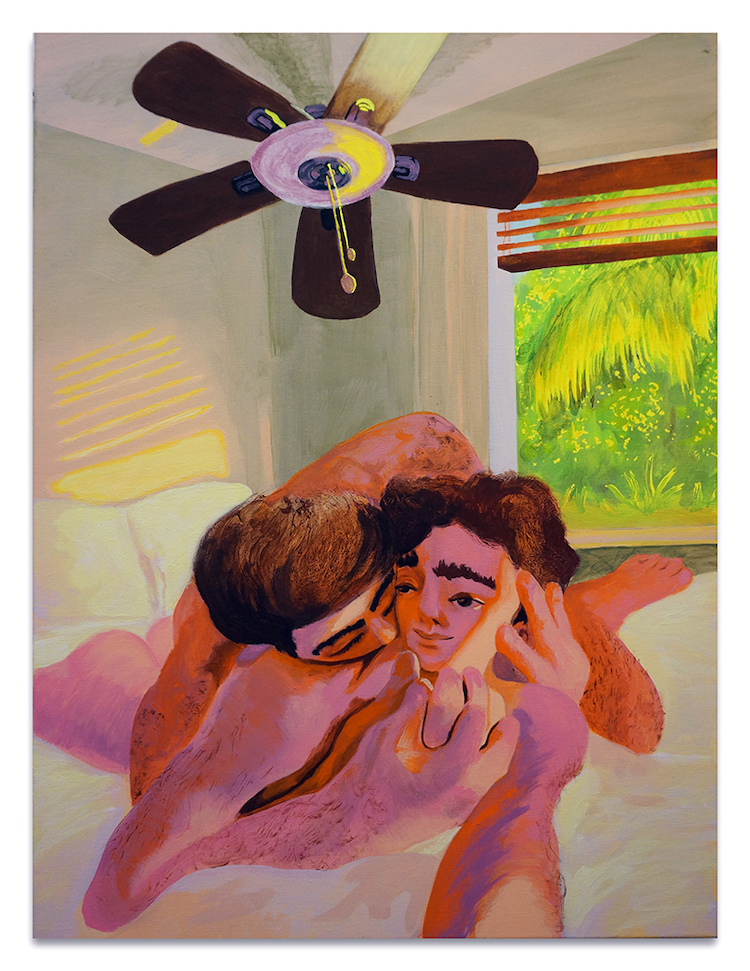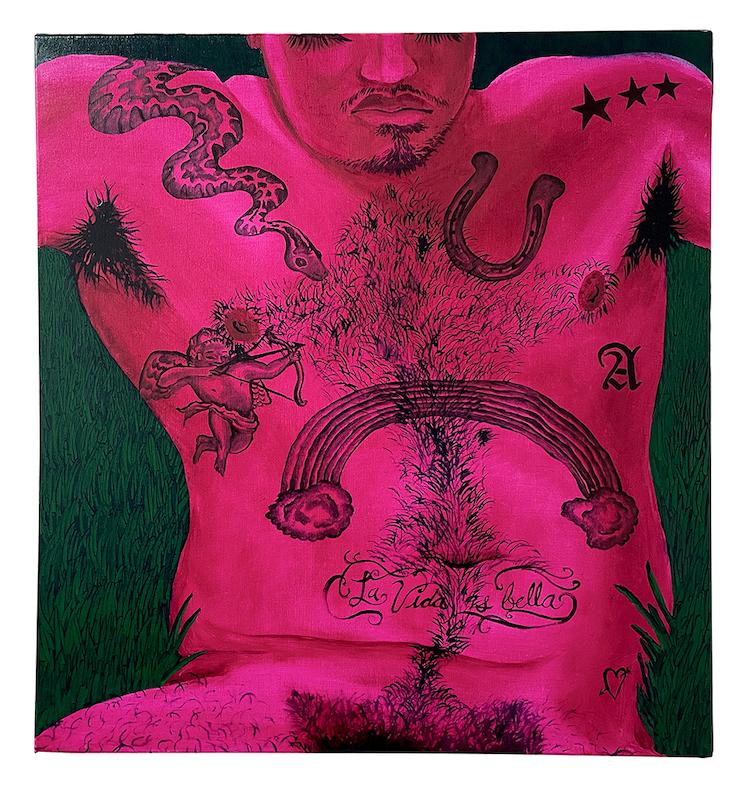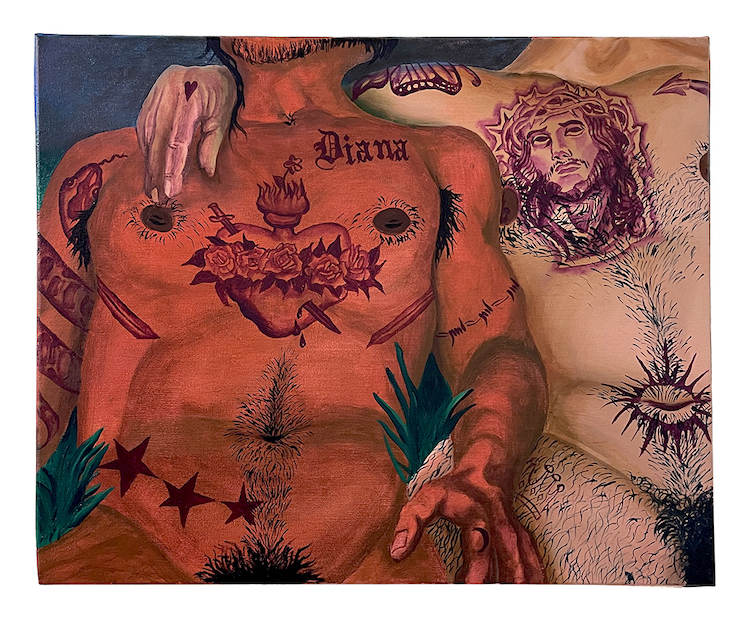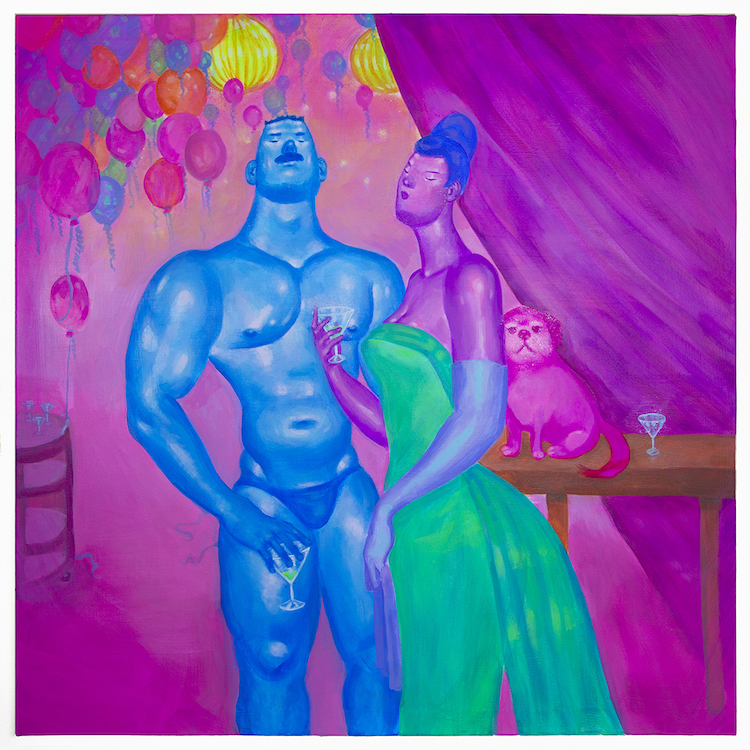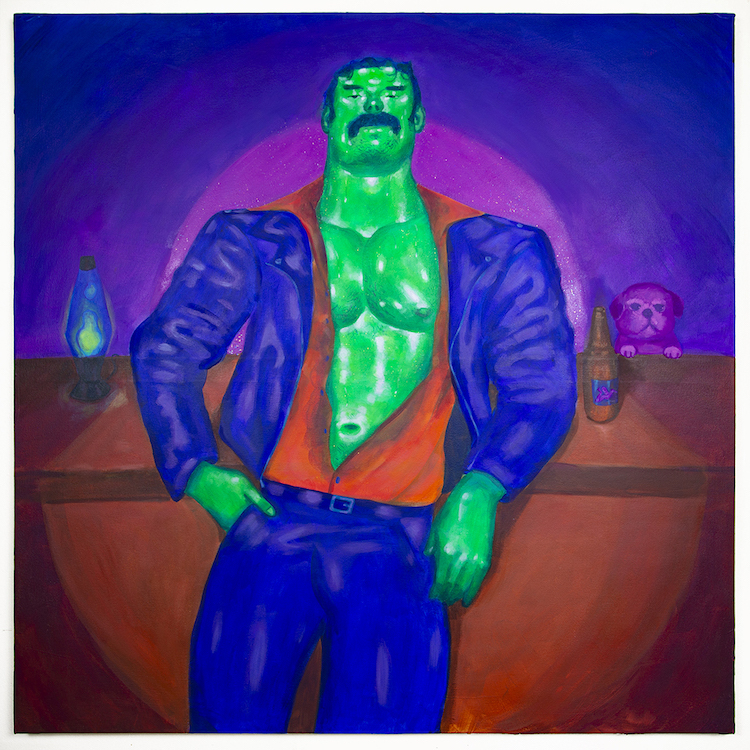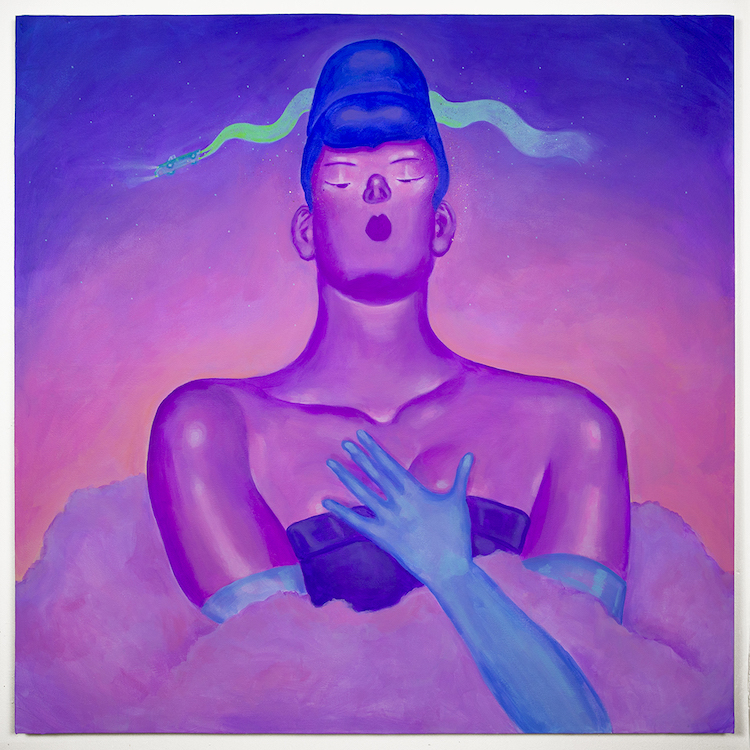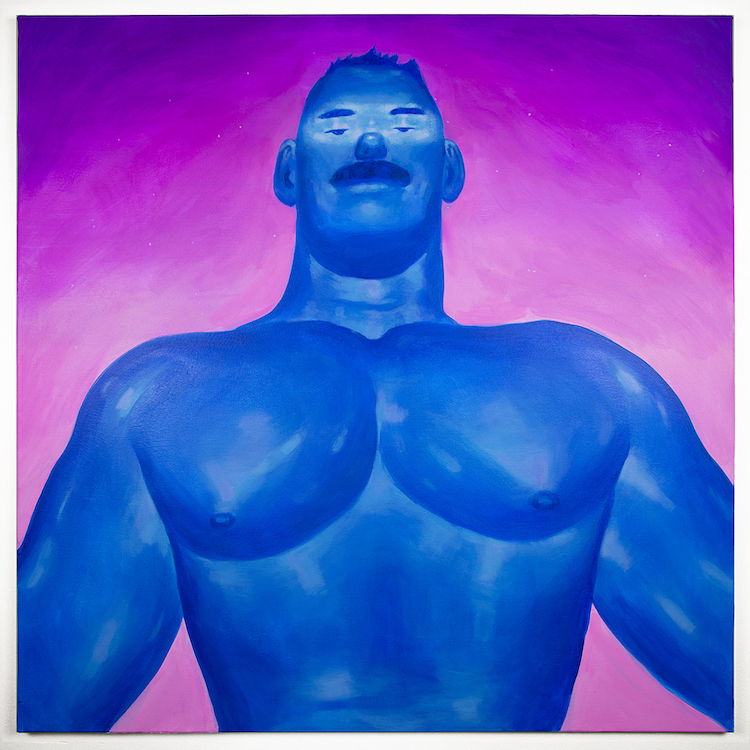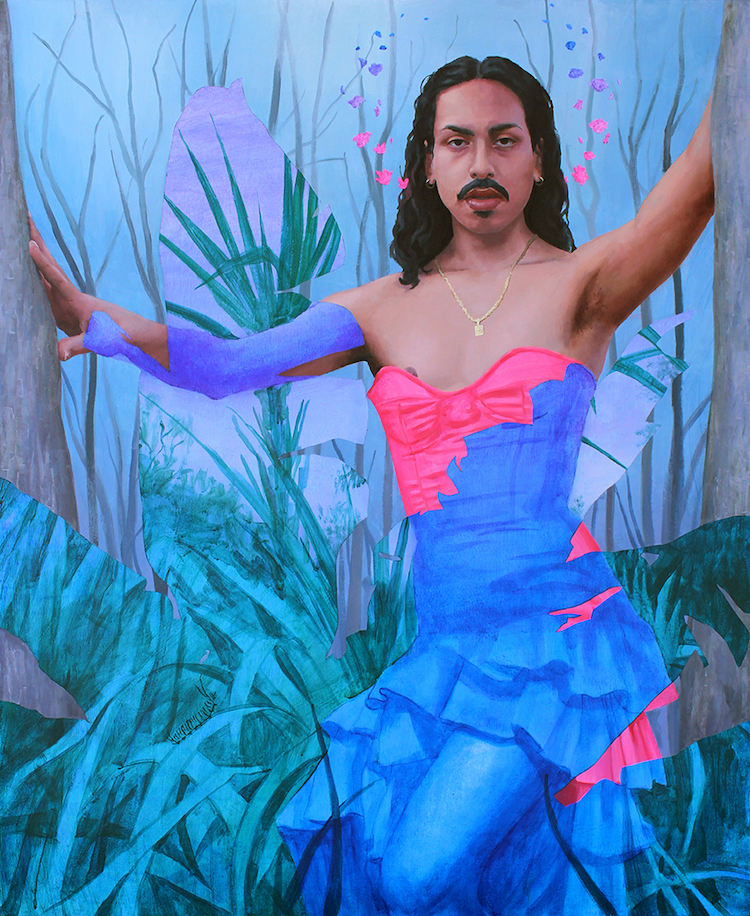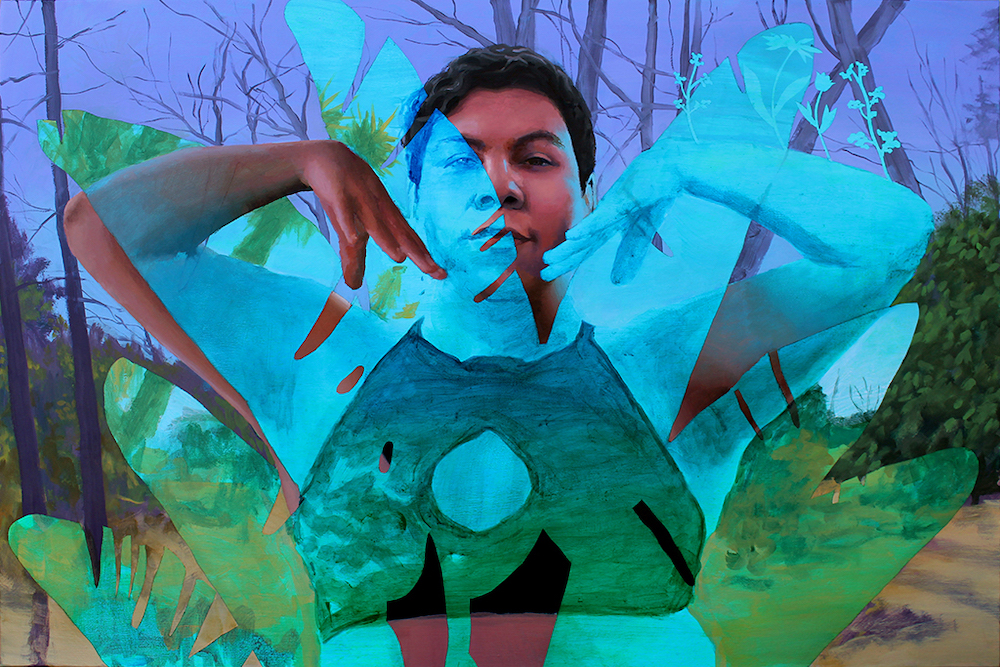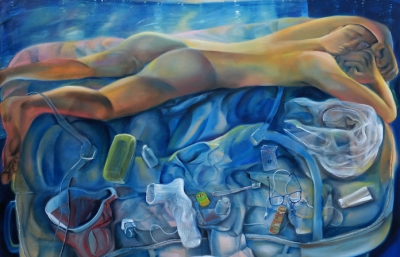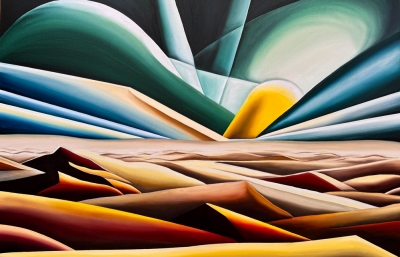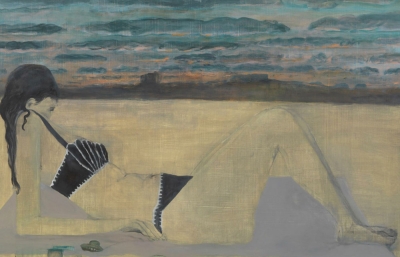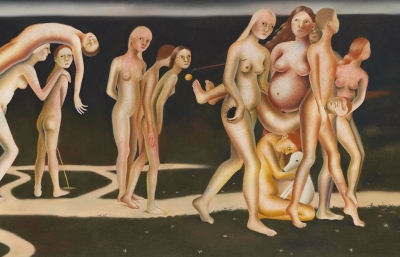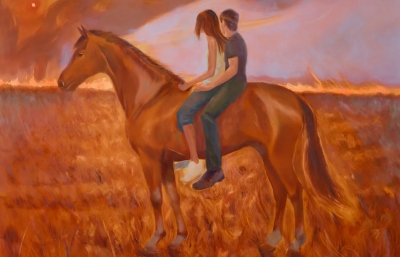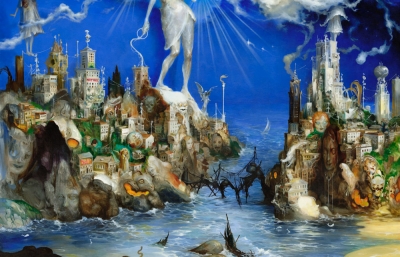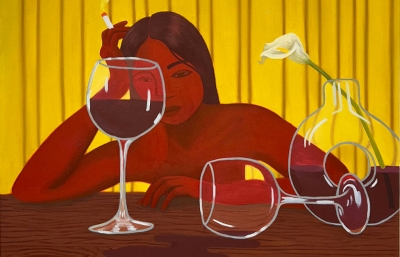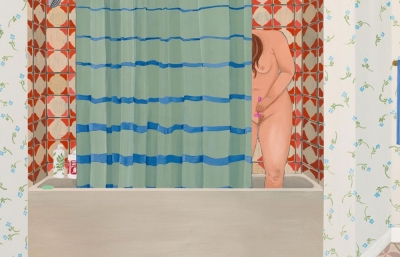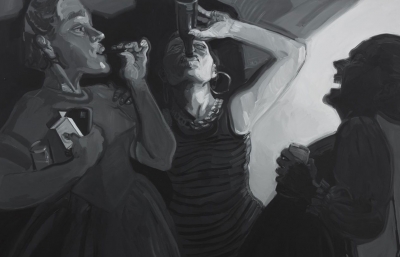Hashimoto Contemporary is pleased to present Are You A Friend of Dorothy? a group exhibition featuring new works by Santiago Galeas, Jean-Paul Mallozzi, Juan Arango Palacios, Carlos Rodriguez, and Justin Yoon. Each artist explores their identity and sexuality in emotive, figurative painting to create depictions of joy, belonging, and queer intimacy.
Justin Yoon has created a cast of characters that serve as archetypical figures in his candy-coated, cinematic universe. Blue Dream appears glistening in a speedo to display his divinely muscled physique. His constant companions—Marge the Space Queen, glamorous in floor length gowns, and Five Poundz the pink puppy—attend parties and picnics together, confident and at ease with one another no matter the setting. Making his debut appearance, Machoman Park joins the gang and continues Yoon’s depiction of the Gay Asian male gaze. Yoon describes informative moments of “Sharing eye contact with an attractive man across the bar, looking into his eyes right after you’ve kissed, or even seeing your dear friends, whom you call ‘Your People,’ looking back at you as you stumble back to them at a party; all of these moments of glances become something more monumental and poetic to us, as without them, we wouldn't be who we are.”
Mexico City-based Carlos Rodriguez’s latest body of work contemporizes Grecian mythology, depicting strong yet soft men rollicking with classical statues. Sensuous and playful, Rodriguez’s figures display tenderness in their interactions. The Myth of Nerites references the love between the sea deities Nerites and Poseidon: one of hard stone the other of soft flesh, the men clasp each other in a colonnaded pool, intertwined and at rest with one another. Throughout the new work, Rodriguez shapes his figures with statuesque, god-like forms while preserving their humanity, sensitivity, and revelry.
Juan Arango Palacios’s vibrant and detailed works paint queer bodies at rest, allowing the viewer to peek at snapshots of intimacy and introspection. The chromatic torsos are festooned with tattoos, giving hints at each figure’s life and history. Through his paintings, Palacios represents “memories, places, people, and archetypes that I associate with the safety, survival, and endurance of queer bodies in spaces that challenge their existence.”
Jean-Paul Mallozzi’s fluid and tactile mark making renders scenes of quiet intimacy and brash joy. Mallozzi’s abstracted figures swirl with energy and emotion from quiet morning embraces in a sun drenched bed to ebullient, neon lit club scenes. Each work offers a glimpse into Mallozzi’s “formative memories, centered around coming out in the late 1990s. This period was marked by pure joy, terror, wonder, and fear, which forced me to assimilate into a complex culture of twinks, jocks, daddies, nerds, club kids, and gaymers who were both welcoming and judgmental, loving and spiteful, supportive and eviscerating.”
Santiago Galeas uses his media as metaphor to illustrate the duality of his subjects. Gazing out from forested landscapes and split between two worlds, Galeas’s figures are at once grounded in the deciduous forests of the continental U.S., tightly rendered in oil, and in the bright, otherworldly landscapes of their diasporic homelands, rendered in loose, energetic acrylic. Often depicting friends and admired community members, Galeas subtly codes the sitters’ multi-faceted identities into their portraits, folding in fond memories, nods to family histories, and experiences with queerness.
Rooted in personal narratives and lore, all five artists have created their own visual languages to imagine queer utopias filled with safety, community, tenderness and serenity. As the Cowardly Lion said while making his way through the Land of Oz, “Any friend of Dorothy must be our friend, as well.”



